NORTH WALES COAST RAILWAY:NOTICE BOARD
Rheilffordd arfordir gogledd Cymru: Hysbysfwrdd
13 October 2020





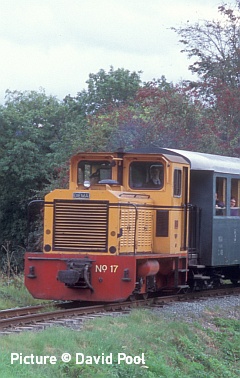
Forthcoming events
(see also our Calendar page for venues)
Note: we have removed all entries relating to meetings as the events are cancelled.
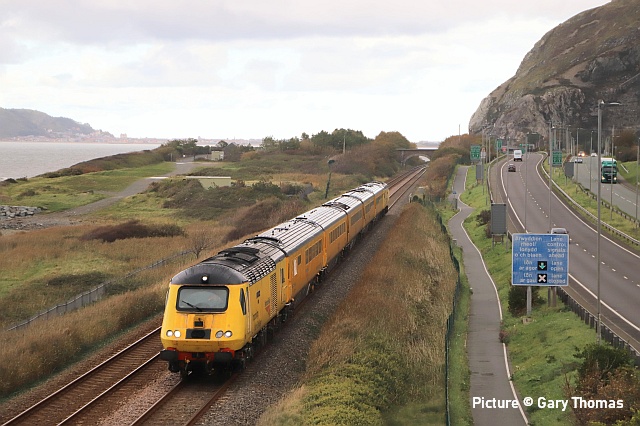
The new Measurement Train passing Dwygyfylchi, 8 October (Gary Thomas).
Bangor is now a 'no-go' area, and there are discussions in progress regarding the best of Gwynedd and Anglesey, but here are some more pictures (new and old) for you - again, time and various technical issues have prevented us from including everything on-hand, but keep safe and keep sending! - Charlie
Sun and Shade at Holyhead - pictures by Stuart Broome
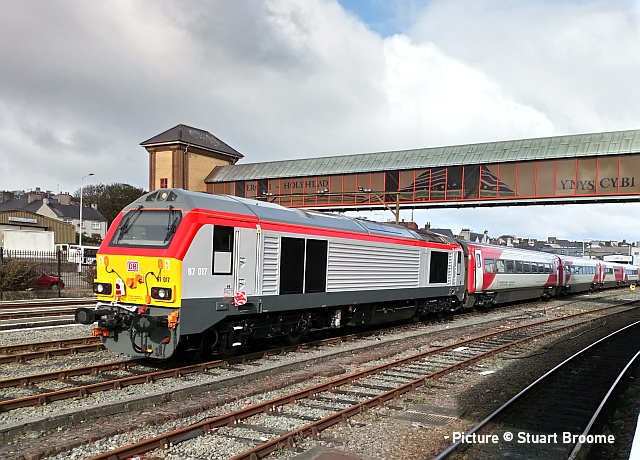
Holyhead on 10 October, with 67 017 and its coaches patiently waiting for staff training. (We have recently updated our Class 67 page to cover recent developments. Comments welcome.)
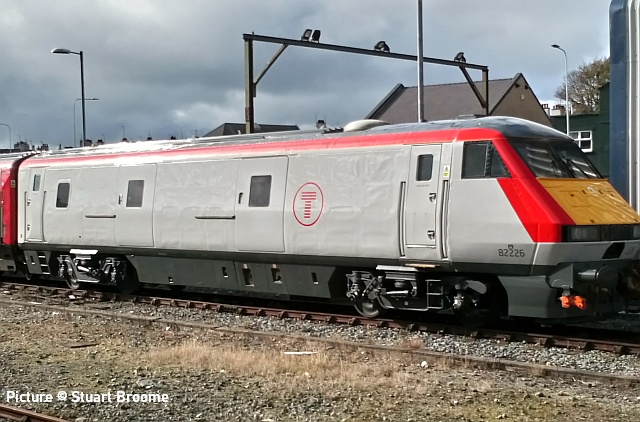
Driving Van Trailer 82226.
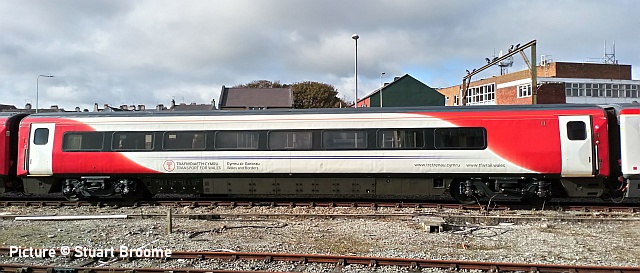
This set is 'HD01'. This coach has lost its numbers, we believe it is 14254.
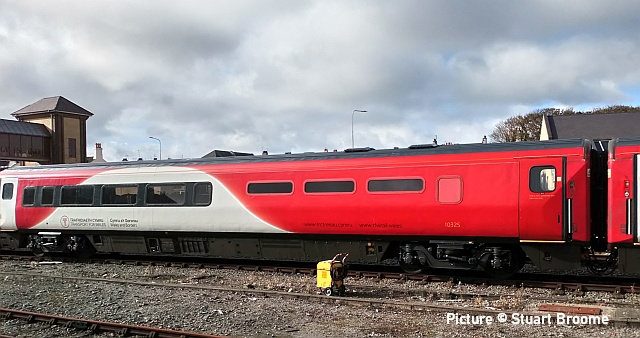
Buffet/kitchen car 10325. Even when the coaches are numbered, the yellow on red is very hard to see.
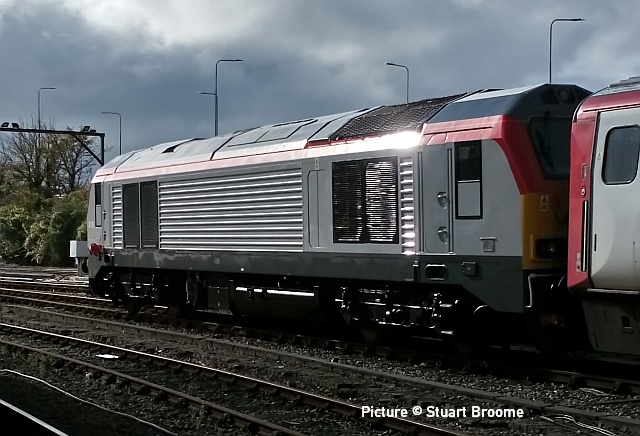
The paintwork on 67 017 has been done to a high standard.
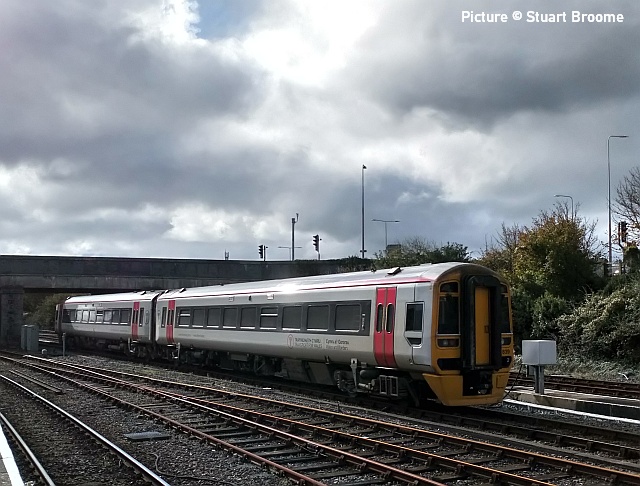
158 839.
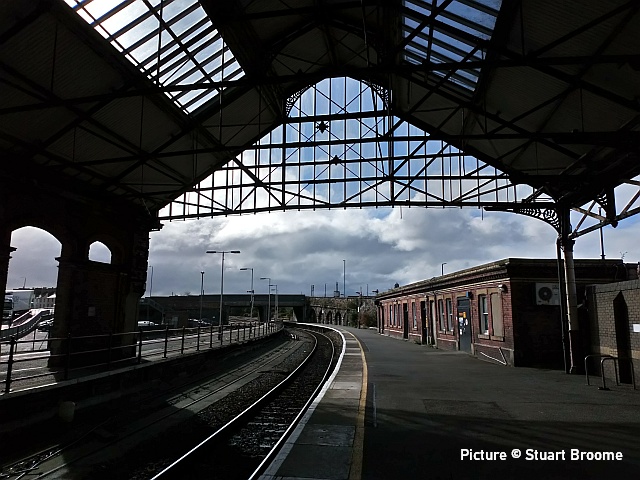
The view from Platform 2.
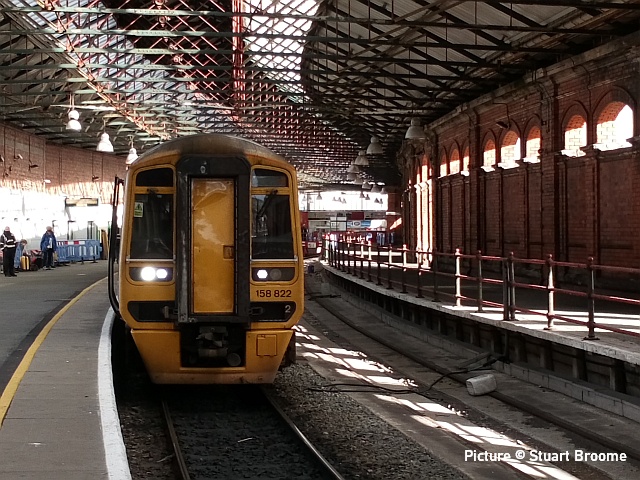
11:30, and the 08:51 from Shrewsbury arrived in Platform 2 in the form of 158 822. This forms the 11:40 back to Shrewsbury.
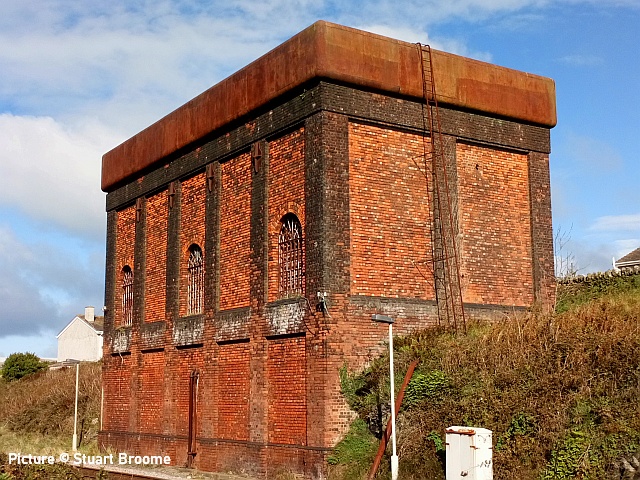
The water tower at Holyhead is an imposing structure, which doesn't seem to have seen much interest from historians. Climbing that ladder must have been a fearsome project! The small structure which stood on a frame at this end of the building has disappeared since Goodle's last visit in 2009. What did that hold?
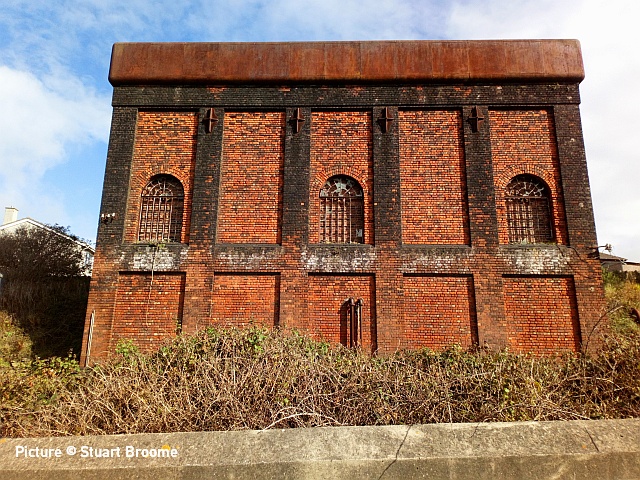
It would be interesting know what's inside - the windows seem to be bricked-up behind, were they always just decorative? A similar, but smaller, version at Settle has been converted to a house.
RHTT scenes
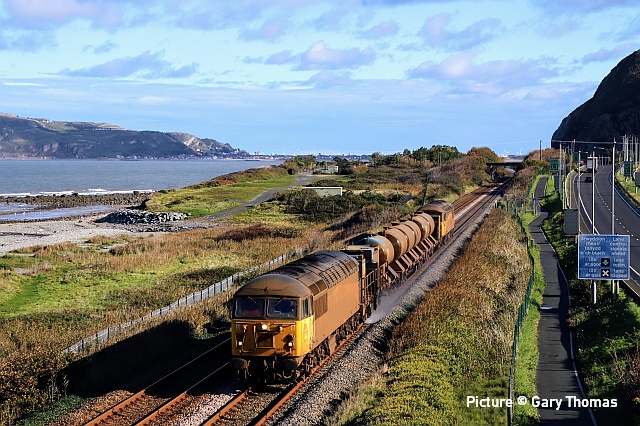
Regular locos 56 029 and 56 113 caught at Dwygyfylchi in sunshine, Tuesday 13 October 2020...
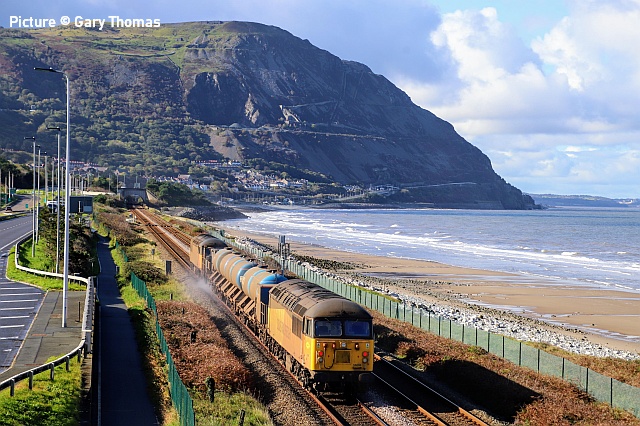
... passing Gary Thomas's favourite viewpoint.
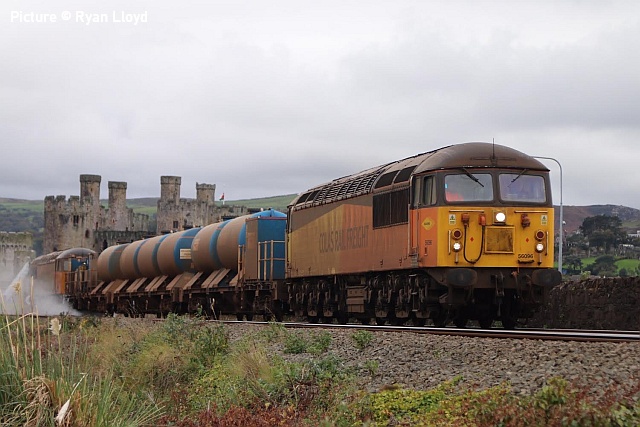
Approaching Llandudno Junction, 13 October (Ryan Lloyd).
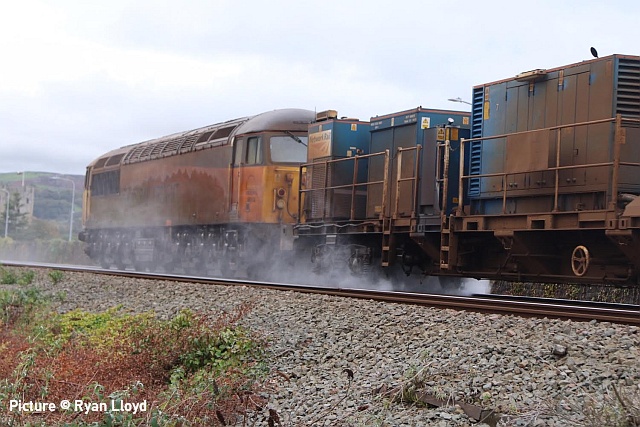
How the locos get dirty! (Ryan Lloyd)
From Dave Sallery's Archive
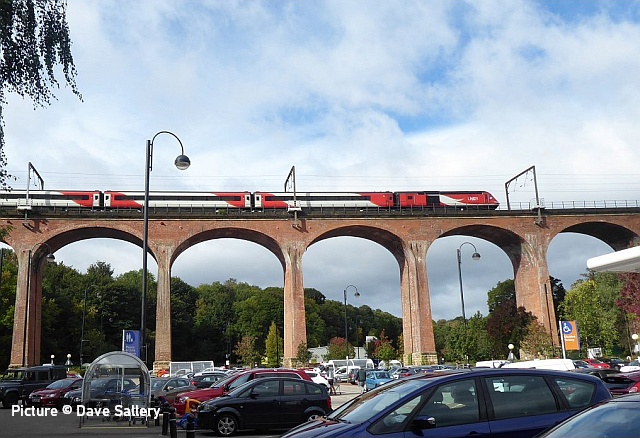
When in Chester-le-Street make sure you shop at Tesco! Notice that the stock transferred to Transport for Wales has retained the same livery layout, which was originated by the short-lived Virgin East Coast company.
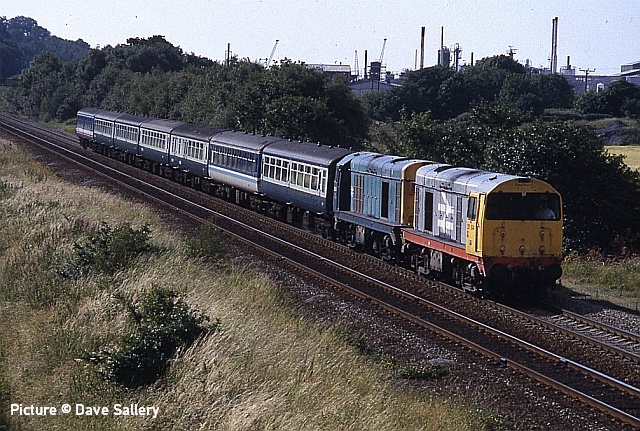
Pairs of Class 20 could be seen working the Llandudno - Derby train back in 1991. 20 104 and 20 190 passing Mostyn on 11 July of that year.
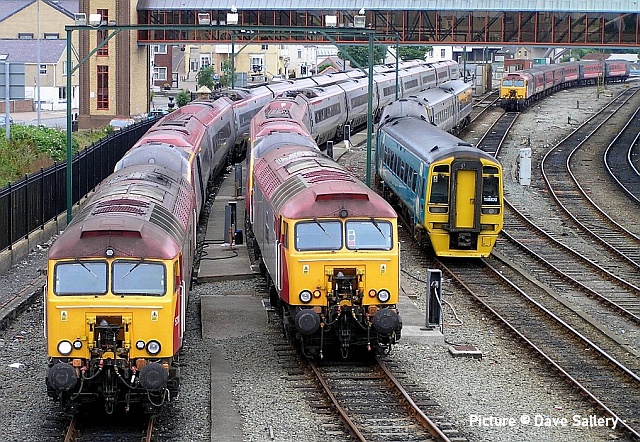
Sunday morning in Holyhead before the introduction of the 'Very High Frequency' timetable on the West Coast Main Line 57 310, 57 315 and 57 316 outnumber the 158s. 2 July 2006.
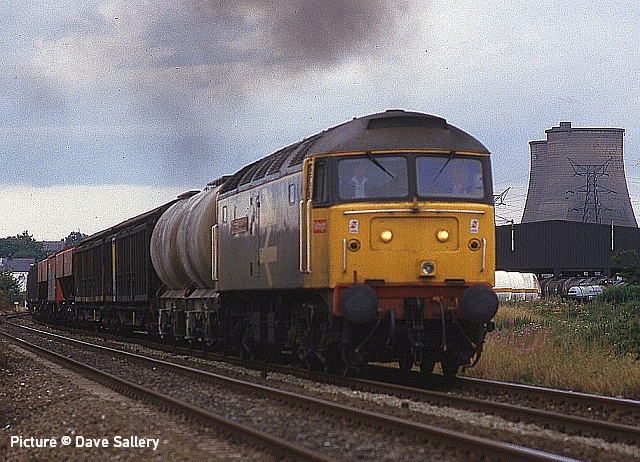
The Warrington Arpley freight, with 47 348, about to drop off some wagons for C. C. Crump's wagon repair works at Dentith's siding between Flint and Shotton, 19 August 1987.
The Sleeper era - by 'Skimpler'
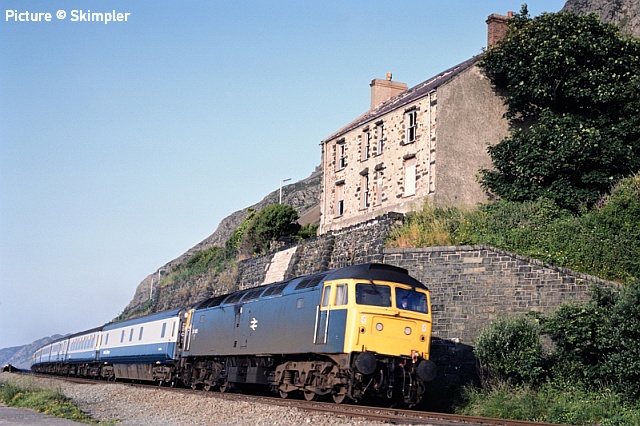
Remember when we had a sleeper service from Holyhead to London? It was a one-way service too. This Euston to Holyhead train in the evenings used to convey the empty sleeping car to Holyhead ready for the overnight run south. Here it is passing Llanfairfechan on a nice Summer evening, 3 July 1983.
I seem to think it was through Bangor about 20:30 so shots of it down the "west-end" were only possible in the high Summer. Also, under the re-branding that came with sectoristation in 1986, Inter-City took on the horrendous black, white and Red stripe livery (personal opinion). The new livery had black ['executive dark grey' officially, around the windows so a sleeping coach did not stand out any more from any other whereas in the Blue and Grey, the smaller and fewer in numbers windows, made a sleeping coach stand out form the others. This house was in a cracking spot for a view but had been derelict for several years and was knocked down soon afterwards.
Looking back: Welshpool and Llanfair, Part 3 - by David Pool
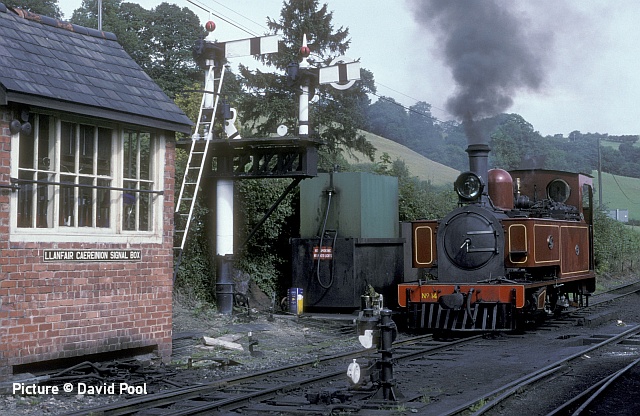
W&L No.14 (Sierra Leone Railway No.85) was at Llanfair Caereinion on 1 September 1996. This locomotive has appeared in a variety of liveries since its arrival in 1978. I think the lined livery suits this locomotive better than the rather drab single colours it first carried, even though it may be more difficult to apply and to keep clean. Note the 'Calling On' signal permitting the locomotive to pick up the coaches in the platform.
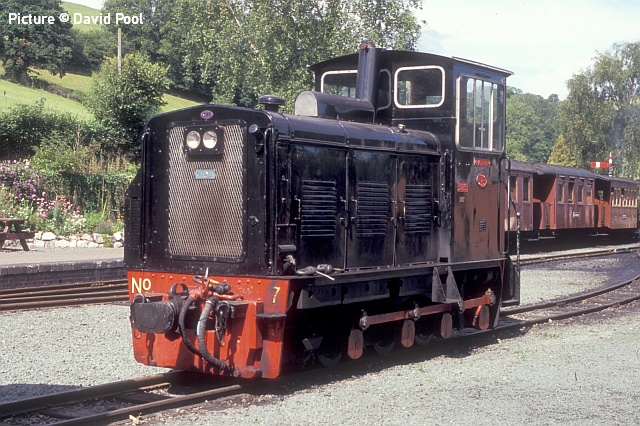
No7 Chattenden is another locomotive acquired from a Royal Naval Armament Depot. It was built by Baguley in 1949 (to a Drewry design) for the Upnor and Lodge Hill Railway (previously called the Chattenden and Upnor Railway). When the railway closed, the Welshpool and Llanfair would have liked to purchase the Drewry (Yard No. 85), but it was retained by the RNAD to work at Plymouth and then at Broughton Moor in Cumbria, so Yard No.44 (the Planet diesel Upnor Castle) was obtained instead. Eventually No 85 became available, and arrived at the W&L in 1968, at which time Upnor Castle was sold to the Ffestiniog Railway and regauged. Chattenden was photographed on 28 August 2011 at Llanfair.
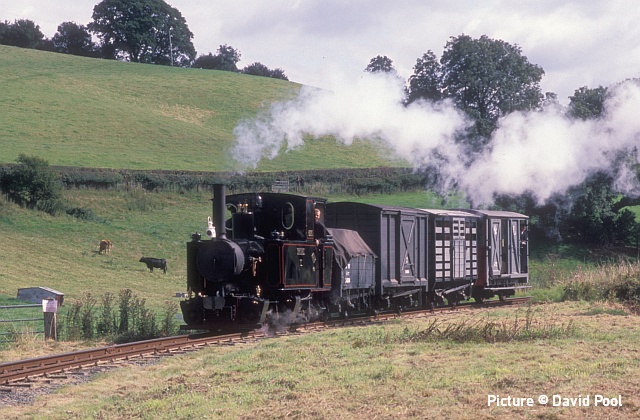
A visitor to the W&L Gala on 5 September 2015 was this 0-4-4-0T Mallet locomotive from the Statfold Barn collection. Built by Orenstein & Koppel in 1905 for a sugar mill in Java, it became Pakis Baru No.5. The steam locomotives in the sugar industry were eventually retired, and several were purchased and brought back to the UK. Some were 2 foot gauge, but No.5 was 2 foot 6 inch gauge.
Mark Hambly adds: No.5 is one of two ex-Pakis Baru locomotives in the Statfold collection, the other being No. 1, an O&K 0-4-0WT which generally ran with a small tender. These two locos were among the earlier restorations at Statfold and were the principal operational 2'6" gauge locos for the time the railway was dual gauge 2'0" and 2'6". Subsequent additions to the collection were predominently 2'0" and so about five years ago the main running line was made 2'0" only and the two ex-Pakis Baru locos were relegated to static exhibits. No.5 is now displayed conventionally at ground level in the main hall of Statfold's Roundhouse events venue while No.1 is elevated over the stage on the frames of a South African Railways 2'0" gauge bogie flat wagon!
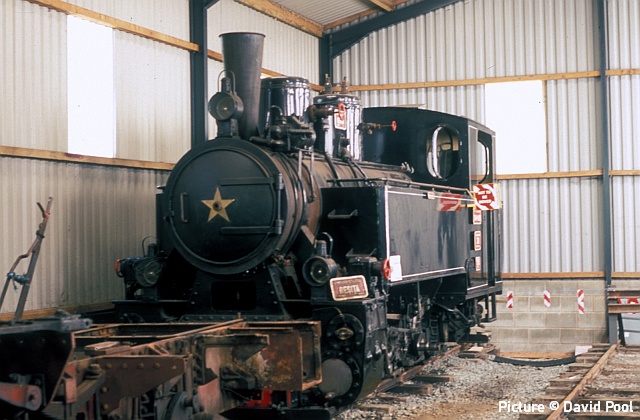
W&L No.19 was another unusual locomotive, being an articulated 0-8-0T built in Resita (Romania) in 1954 and used on Romanian forest railways, then later in a cement works. It came to the UK in 2007 numbered 764.425, and was used on the W&L until 2011, when it was taken out of service for a major overhaul. It ran again in 2012, but in 2013 it suffered a broken axle and was stored at Llanfair, where it was photographed on the Gala day in September 2015. In 2016 it was sold and repaired, and is now on a Tourist railway in the Czech Republic.
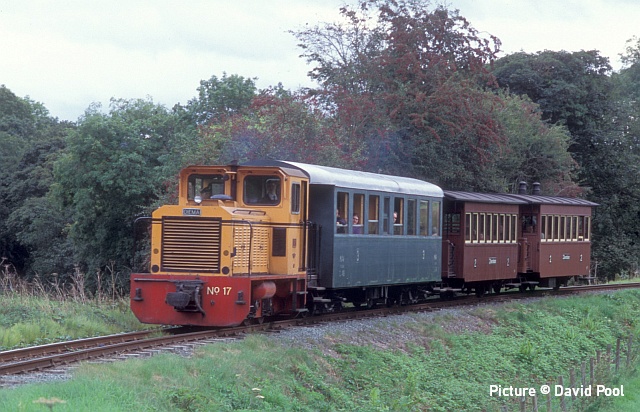
No.17 is a Diema diesel, built in 1979 at the Diephulzer Works in Germany for the Taiwan Sugar Corporation. It was obtained by the W&L in 2004, and is more than capable of handling any train on the line. It is pictured at Heniarth during the 2016 Gala on 24 September, having just crossed the Banwy bridge, a popular location for photographers.
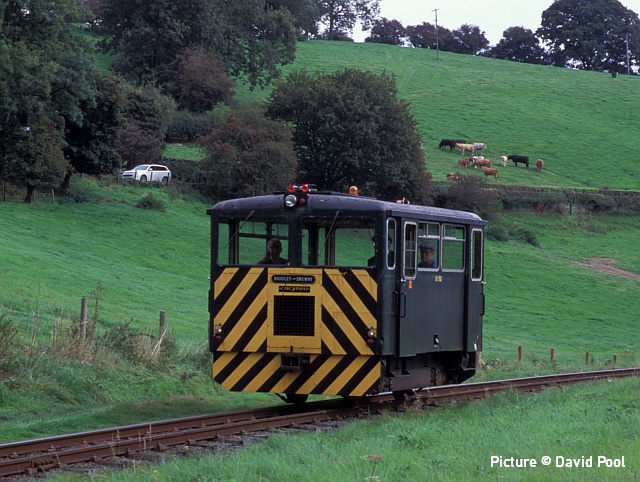
Railcar 9150 was built by Baguley-Drewry in 1976 as a standard gauge vehicle for the MOD at Longtown in Cumbria. It was sold and regauged to 2 foot 6 inch, and after successful test running on the W&L it was purchased in 1971. Known as The Wasp, it was operating during the 2016 Gala at Heniarth and carrying the name Cacynen. This appears to be the Welsh for Bumblebee, but possibly also applies to wasps!
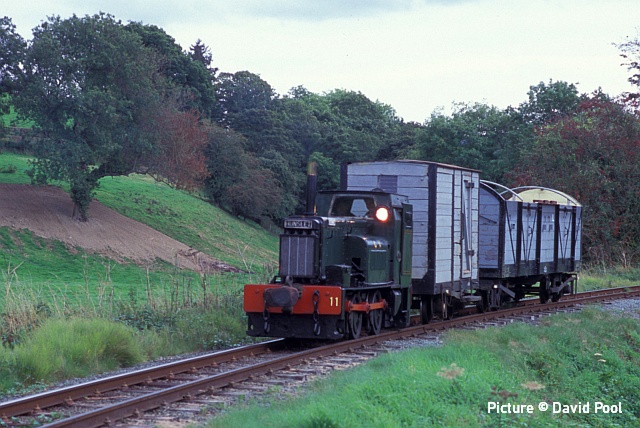
The size of No.11 Ferret gives a clue to its origins, since it was built by Hunslet in 1940 for use in confined spaces and to a flameproof design, spending its working life at the Underground Magazine Facility of the RNAD at Dean Hill in Wiltshire. In 1971 it was acquired by the W&L and during the 2016 Gala was hauling a short freight train at Heniarth.
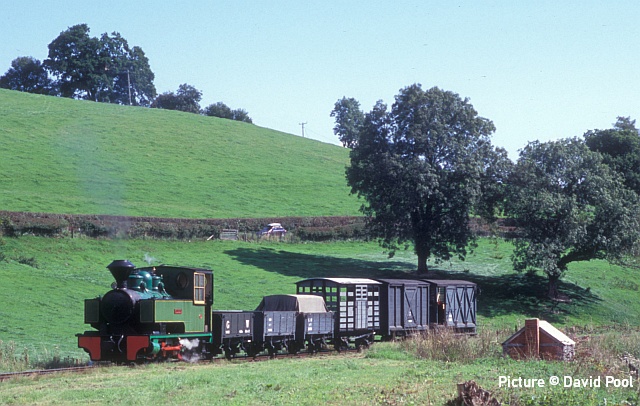
At the following year’s Gala on 2 September 2017, the star visitor was the Bagnall locomotive Superb, built in 1940 for Bowater’s Railway at Sittingbourne, where it operated until 1969, being then acquired by the Sittingbourne and Kemsley Light Railway. Superb was hauling an assortment of W&L wagons, and again photographed at Heniarth.
Cambrian Corner: Dovey Junction signals - by
Graham Breakwell
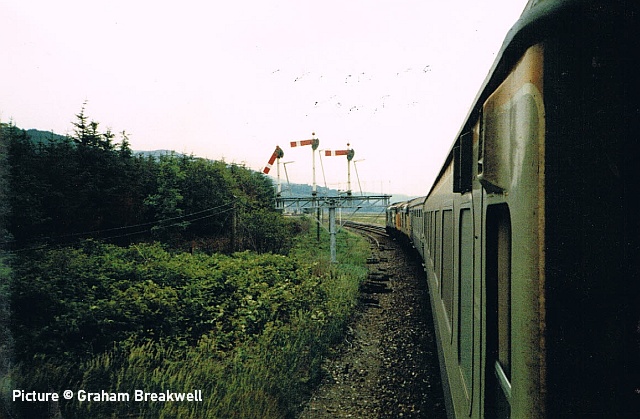
In the 1980s, Dovey Junction had an interesting collection of semaphores. First up, on 21 June 1986 37 426 and 37 430 with a rake of 10 Mk2F coaches, all first class, heading the 12:40 from Shrewsbury to Aberystwyth, signalled for the junction’s down loop line.
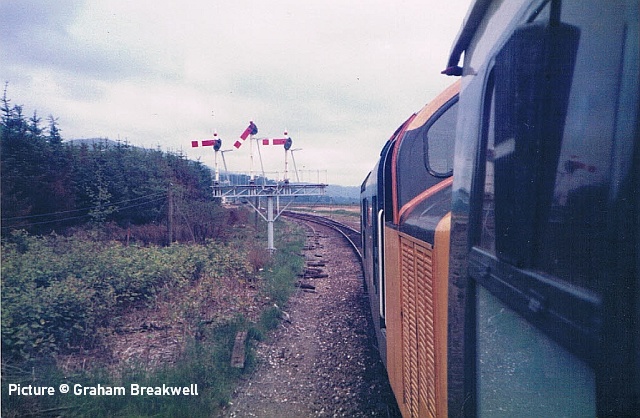
On 7 June 1986 37430 takes the Platform 2 line with the 0844 hours Shrewsbury to Aberystwyth comprising 9 Mk 1’s in Intercity livery.
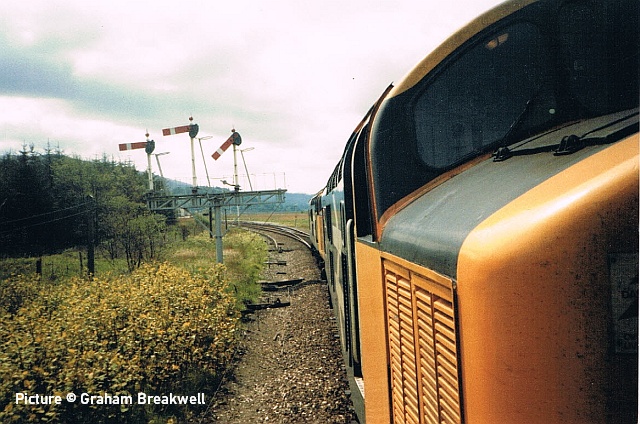
On 27 September 1986 37 426 and 37 429 take the summer Saturday Euston –Pwllheli through platform 1.
North Wales Coast home page | Archive | Previous Notice Board